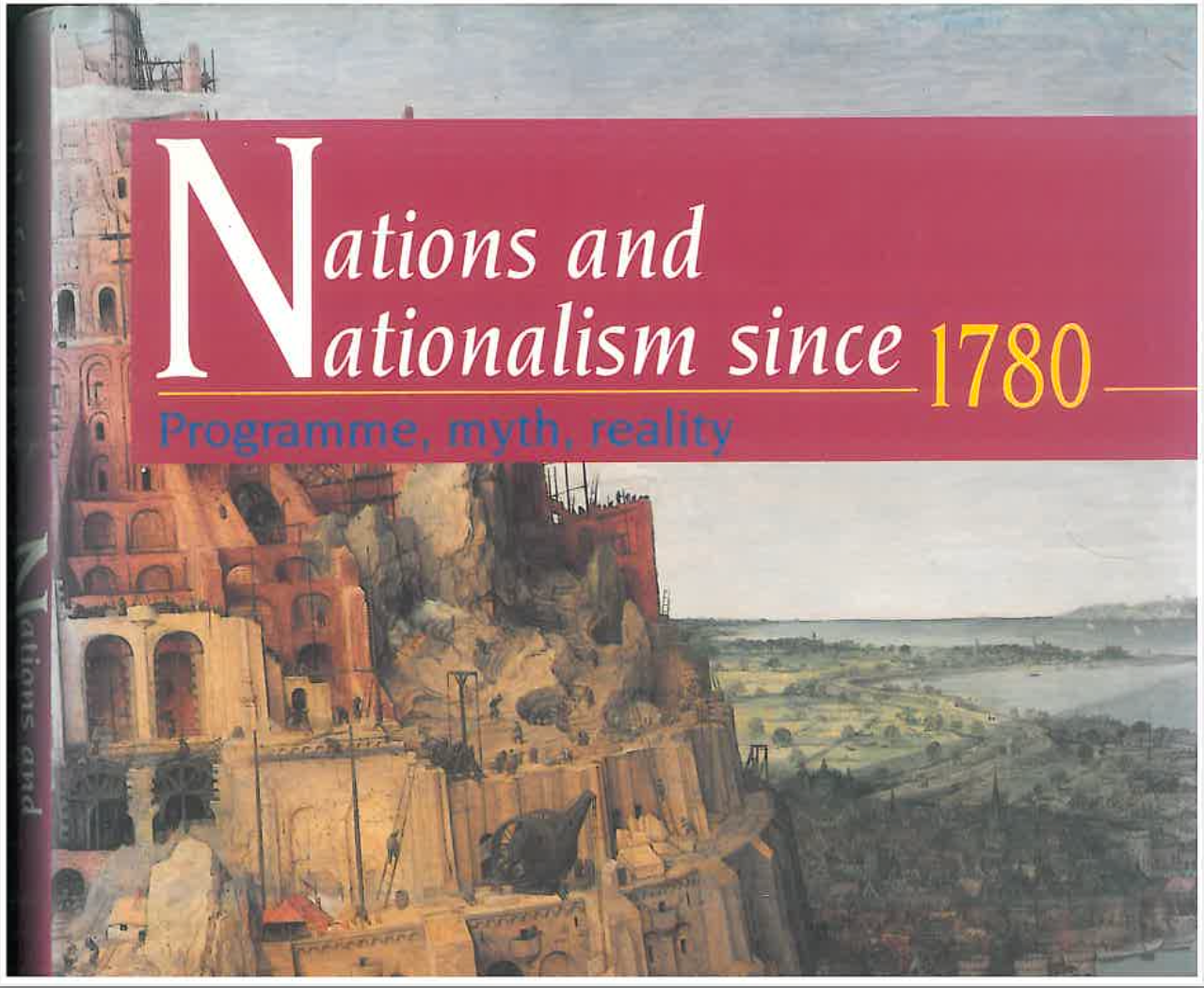Programme, Myth, Reality

Eric Hobsbawm’s Nations and Nationalism Since 1780 is based on a series of lectures he gave at the Queen’s University of Belfast in May 1985. For the purposes of this blog, I intend to analyze Hobsbawm’s introduction to Nations and Nationalism as the introduction serves as a pivotal foundation what the rest of the book entails.
**Citation Note: Full citation provided at the end of this post
— —
The introduction begins with a random hypothetical:
Suppose that one day, after a nuclear war, an intergalactic historian lands on a now dead planet in order to enquire into the cause of the remote little catastrophe which the sensors of his galaxy have recorded … Our observer, after some study, will conclude that the last two centuries of the human history of planet Earth are incomprehensible without some understanding of the term ‘nation’ and the vocabulary derived from it. (1)

Succinctly, Hobsbawm posits the concern of the book in the first paragraph: what exactly is a nation? It is evident that the term ‘nation’ serves of utmost importance in human affairs, yet the lack of a concise definition ought to be disturbing for historians.
What is a (or the) nation? … No satisfactory criterion can be discovered for deciding which of the many human collectivities should be labelled in this way. (5)
Hobsbawm finds that, when defining a nation, there is a level of difficultly in assessing or examining a specific criterion as there is “no way of telling [an] observer how to distinguish a nation from other entities a priori” (5). In other sciences such as zoology, there are clear classifications of various entities; Hobsbawm isolates that it is quite clear that one does not confuse a bird with a mouse. “Nation-watching would be simple if it could be like bird-watching” (5).
However, one shouldn’t fall into pessimism at the lack of a clear definition of what a nation is or what constitutes a nation. Many attempts have been made at establishing an objective criteria for the ‘nation’ (while simultaneously, making an objective criteria for what is not a ‘nation’). Much of these attempts are made on the basis of single criteria “such as language or ethnicity or a combination of criteria such as language, common territory, common history, cultural traits or whatever else” (5).
For Hobsbawm, Josef Stalin probably comes closest to a definition of an objective kind:
A nation is a historically evolved, stable community of language, territory, economic life and psychological make-up manifested in a community of culture. (5)
At any rate, Hobsbawm is clear that we must discard objective definitions of ‘nation’ as:
All such objective definitions have failed, for the obvious reason that, since only some members of the large class of entities which fit such definitions can at any time be described as ‘nations’, exceptions can always be found. (5–6)
Hobsbawm utilizes the example of the Tamil-speaking people in Ceylon to contest why objective definitions fail to take into account various factors. His analysis of the Tamil-speaking people won’t be analyzed here, however, it is integral to note that objective definitions of the ‘nation’ fail to account for a litany of various exceptions to the rule.
Rather than using an objective definition, one may use a subjective one (though this comes with its own problems). Hobsbawm says:
The alternative to an objective definition is a subjective one, whether collective (along the lines of Renan’s a’ nation is a daily plebiscite’) or individual, in the manner of the Austro-Marxists, for whom ‘nationality’ could attach to persons, wherever they lived and whoever they lived with, at any rate if they chose to claim it. (7)
Yet, the difficulty of subjective definitions of the ‘nation’ is that subjective definitions reduce the nation to particular subject positions or what Hobsbawm calls “single dimensions”: “Nor indeed is it possible to reduce even ‘nationality’ to a single dimension, whether political, cultural or otherwise” (8).
Therfore, Hobsbawm, for the purposes of his praxis, discards objective and subjective definitions in favor of agnosticism:
Neither objective nor subjective definitions are thus satisfactory, and both are misleading. In any case, agnosticism is the best initial posture of a student in this field, and so this book assumes no a priori definition of what constitutes a nation. (8)
Approaching the concept of the nation through agnosticism is to remain open-minded about the perspectives and complexities associated with the concept of the nation. Hobsbawm himself does not find “the ‘nation’ as a primary nor as an unchanging social entity,” he says, “[the nation] belongs exclusively to a particular, and historically recent, period” (9).

None of this is to assume that the nation can be anything, but instead, there are certain functions that exist which serve nations. Hobsbawm states:
Nations exist not only as functions of a particular kind of territorial state or the aspiration to establish one … but also in the context of a particular stage of technological and economic development. (10)
In this context, to properly inform ourselves about what constitutes the nation, we must recognize that the spoon-fed narratives by the victors in history have the potentiality to obfuscate what the nation is. Hobsbawm refers to this as the “view from below” whereby the nation is “seen not by governments and the spokesmen and activists of nationalist (or non-nationalist) movements, but by the ordinary persons who are the objects of their action and propaganda …” (11).
Unfortunately, the investigation of the history surrounding the ordinary persons who serve as the objects of the government’s action and propaganda is incredibly difficult. However, we are fortunate enough to have “social historians [who] have learned how to investigate the history of ideas, opinions and feelings at the sub-literary level, so that we are today less likely to confuse, as historians once habitually did, editorials in select newspapers with public opinion” (11).
Hobsbawm proceeds to outline three reasons why the framing of national identity by governmental authorities and spokespersons may not necessarily be the criteria that should shape the discourse on defining a nation.
First, official ideologies of states and movements are not guides to what it is in the minds of even the most loyal citizens or supporters.
Second, and more specifically, we cannot assume that for most people national identification — when it exists — excludes or is always or ever superior to, the remainder of the set of identifications which constitute the social being. In fact, it is always combined with identifications of another kind, even when it is felt to be superior to them.
Thirdly, national identification and what it is believed to imply, can change and shift in time …
(11)
Rather facetiously, Hobsbawm comments on the dangers of nationalism by citing Ernest Renan (this may be my favorite quote in the entire book):
Nationalism requires too much belief in what is patently not so. As Renan said: Getting its history wrong is part of being a nation. (12)
Ultimately, Hobsbawm advocates for an agnostic approach to defining the nation. This approach requires that “the historian leaves his or her convictions behind when entering the library or the study” (13). Thankfully, Hobsbawm follows his own advice — not in saying that he needs to leave his convictions at the door — but by stating that he won’t let his biases influence his historical analysis in Nations and Nationalism Since 1780.

— —
Citation:
- Hobsbawn, Eric. Nations and Nationalism Since 1780. Published by the Press Syndicate of the University of Cambridge. 1990.
Leave a Reply